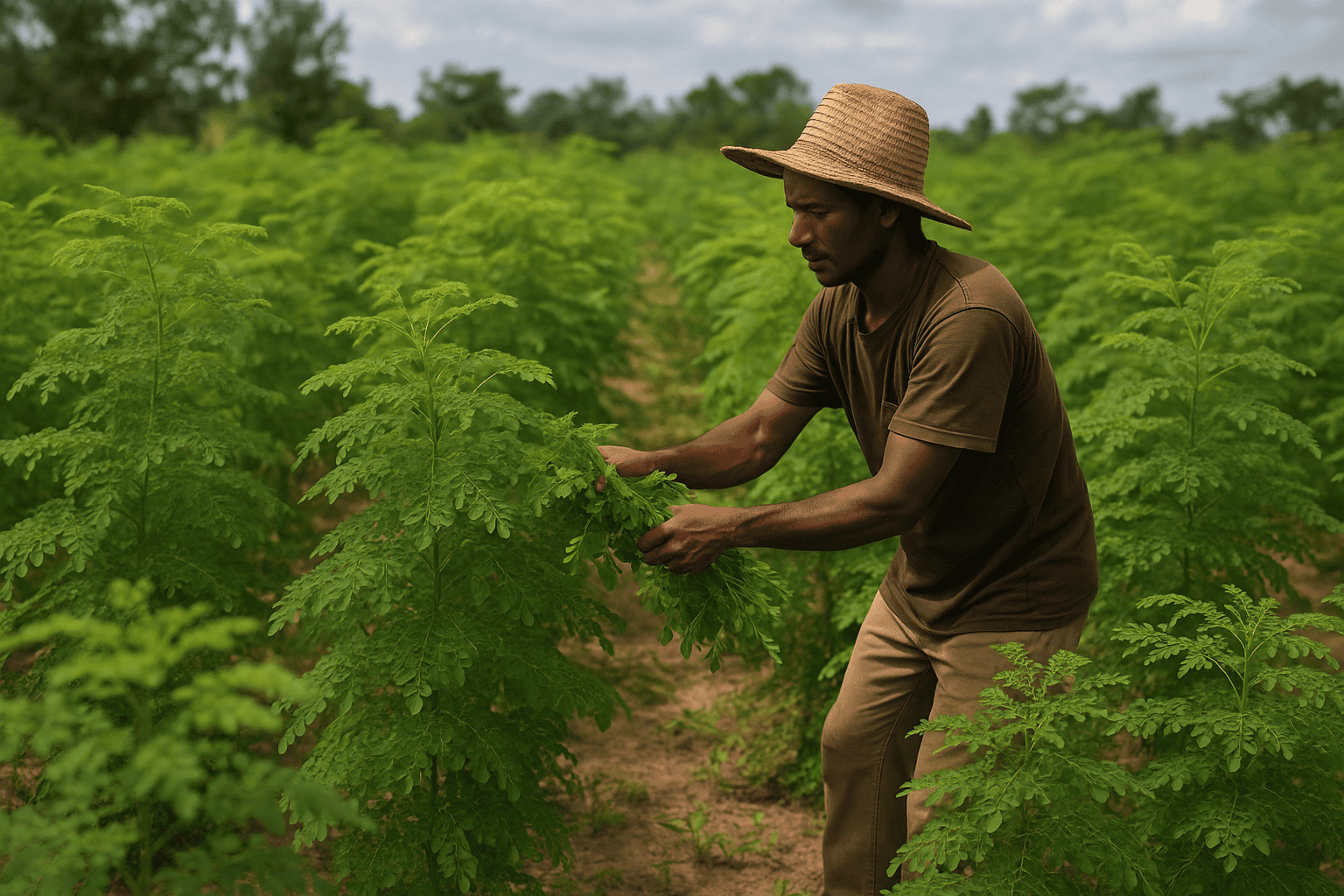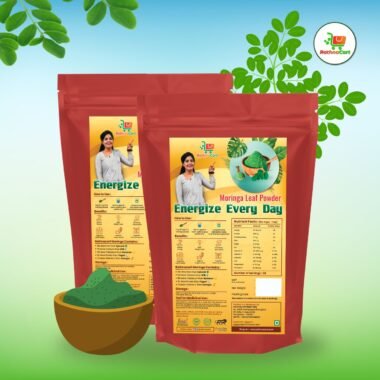{ Moringa Leaves Farming – Moringa, often called the “Miracle Tree,” has gained immense popularity in recent years for its incredible nutritional and medicinal benefits. From smoothies to skincare, moringa is making its way into global markets, and moringa leaves farming is proving to be a profitable and sustainable business for small and large-scale farmers alike. }
If you’re considering a high-value crop that’s easy to grow, requires minimal input, and offers strong market demand, moringa leaves farming might just be the opportunity you’ve been looking for.
Why Moringa?
Moringa (Moringa oleifera) is a fast-growing, drought-resistant tree native to parts of India and Africa. Every part of the plant is useful – from the roots to the seeds – but the leaves are particularly prized for their rich content of vitamins A, C, calcium, potassium, iron, and protein. They’re often dried and powdered for supplements, teas, and health foods.
With the global wellness industry booming, demand for moringa products is only increasing. This makes moringa farming not just sustainable, but highly lucrative.
Step-by-Step Guide to Moringa Leaves Farming
1. Site Selection and Climate
Moringa grows best in tropical and subtropical climates. It prefers well-drained sandy or loamy soil with a pH between 6.0 and 7.5. The plant thrives in full sunlight and tolerates heat and drought, making it ideal for regions with erratic rainfall.
2. Land Preparation
Clear the field of weeds and debris. Plough the soil 2-3 times to a fine tilth. Add well-rotted farmyard manure or compost at 5–10 tons per hectare to improve fertility.
3. Planting
Moringa can be propagated by seeds or stem cuttings. Seeds germinate within 7-10 days. For commercial leaf production, direct seeding or transplanting seedlings at a spacing of 15 cm (row-to-row) and 10 cm (plant-to-plant) ensures dense growth.
High-density planting allows for better leaf yield, with proper pruning encouraging bushy growth and easier harvesting.
4. Irrigation and Care
While moringa is drought-resistant, regular watering (especially during the first 2 months) ensures better establishment and growth. Avoid waterlogging. A drip irrigation system works best for consistent moisture.
Weeding should be done regularly, and pruning the plants after each harvest stimulates new leaf growth.
5. Harvesting
Leaves can be harvested 60–70 days after planting and every 30–45 days thereafter. Harvesting is typically done by hand, cutting the shoots or plucking the leaves. Proper drying is essential to preserve nutrients if the leaves are to be powdered.
Yields can range from 10 to 15 tons per hectare annually under optimal conditions.
Post-Harvest Processing and Market Potential
After harvesting, leaves are washed, shade-dried (to retain nutrients), and milled into powder. The powder can be packed in airtight containers or sachets and sold directly or through distributors.
With rising demand in health food, herbal supplement, and export markets, processed moringa leaf powder fetches premium prices. Organic certification can further boost profits.

A dedicated farmer harvesting fresh moringa leaves in a thriving field — showcasing sustainable and profitable agriculture.
Benefits of Moringa Farming
- Low input, high yield: Moringa requires minimal fertilizers or pesticides.
- Multiple revenue streams: In addition to leaves, you can sell seeds, pods (drumsticks), oil, and even moringa-based products.
- Short growth cycle: Rapid returns within months.
- Climate resilience: Drought-tolerant and adaptable to degraded soils.
- Eco-friendly: Helps in soil improvement and erosion control.
Moringa Leaves Farming: Q&A
Q1: How much land do I need to start moringa leaves farming?
You can start on as little as 0.25 acre and scale up as you gain experience. Even small plots can yield significant profits due to moringa’s high productivity.
Q2: What pests or diseases affect moringa plants?
Moringa is relatively pest-resistant, but common pests include caterpillars, aphids, and leaf miners. Natural pest management like neem oil sprays is often effective. Fungal diseases can occur in overly wet conditions, so good drainage is essential.
Q3: How do I sell moringa leaves or powder?
You can sell to:
- Local health food stores
- Ayurvedic and herbal product manufacturers
- Online platforms like Amazon or Etsy
- Export markets (subject to compliance)
- Direct-to-consumer via your brand or farmers’ markets
Creating a value-added product line (like moringa tea or capsules) can also enhance profits.
Q4: Can I grow moringa organically?
Yes! In fact, organically grown moringa fetches higher prices. Avoid synthetic fertilizers and use natural compost, biofertilizers, and organic pest control methods.
Q5: Is moringa suitable for intercropping?
Absolutely. Moringa can be intercropped with short-duration vegetables, pulses, or herbs during the early growth stages to maximize land use and income.
Moringa leaves farming is more than just a trend – it’s a smart, sustainable, and scalable agricultural business. With rising global awareness about superfoods and natural wellness, moringa stands out as a crop of the future.
Whether you’re a first-time farmer or a seasoned grower looking to diversify, moringa offers low risk and high reward. With the right approach and market strategy, you can turn your moringa farm into a thriving green enterprise.
Conclusion
Moringa leaves farming is a golden opportunity for farmers, entrepreneurs, and agribusiness enthusiasts looking for a sustainable and profitable venture. With its low maintenance requirements, fast growth, and strong global demand, moringa offers an excellent return on investment. Whether you’re growing for local consumption or targeting export markets, moringa can provide a steady income with minimal risk.
By following good agricultural practices, focusing on quality, and tapping into the growing health and wellness market, you can build a resilient business around this miracle crop. Now is the perfect time to invest in moringa farming and be part of the green revolution.


